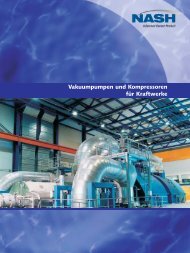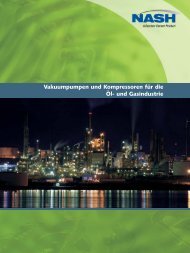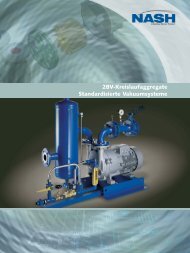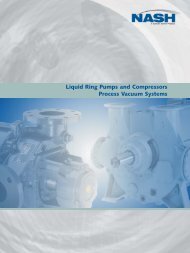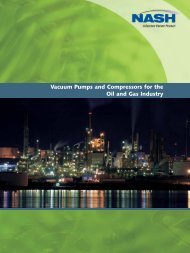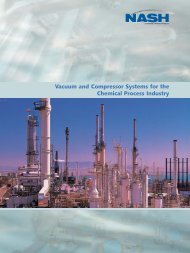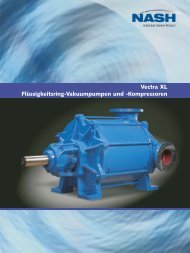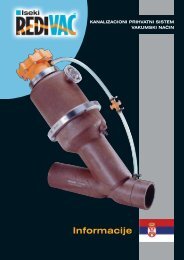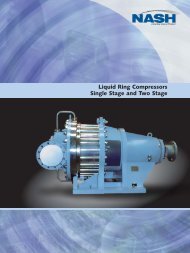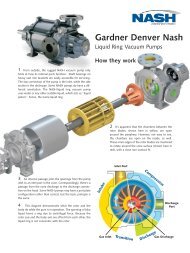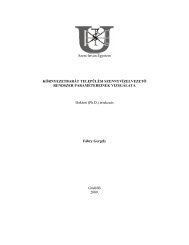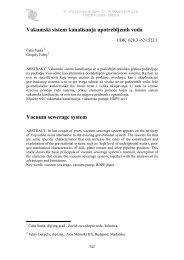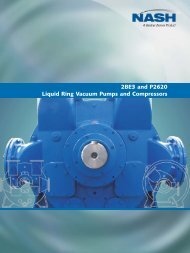introduction
introduction
introduction
Create successful ePaper yourself
Turn your PDF publications into a flip-book with our unique Google optimized e-Paper software.
Interface Valve<br />
1. What is the life of a vacuum interface valve?<br />
The Iseki RediVac interface valve can be expected to last in excess of 25 years. Approximately<br />
every seven years we recommend that bearings and rubber diaphragms are replaced.<br />
2. Of what material is the interface valve made, where is it manufactured and are spare parts<br />
readily available?<br />
The valve is made of glass filled polypropylene with all metal components being of 316(A4)<br />
stainless steel. The Iseki RediVac interface valve is manufactured by Iseki Vacuum Systems at<br />
their Daventry factory in the UK. Spare parts are also available at Daventry or from one of Iseki<br />
RediVac’s many official distributors or service centres situated throughout the world. All spare<br />
parts are ex-stock.<br />
3. Are any specials tools required to service the valve?<br />
No, a standard tool kit used by a maintenance fitter will contain all that is necessary to carry out a<br />
service of the Iseki RediVac interface valve.<br />
4. How many properties may be connected to a single interface valve?<br />
This is not a question that can be answered with a single definitive figure. At the design stage<br />
many factors are taken into consideration such as the size of the main onto which the valve is<br />
connected, the position of the valve within the overall network and the number and configuration<br />
of adjacent valves.<br />
In general, it is advantageous to keep the number of properties per valve higher rather than lower,<br />
as the more frequent firing of the valve will optimise the transportation of the sewage in the<br />
mains. The less sewage that remains in the sump, the less likelihood of septicity setting in before<br />
sewage reaches the treatment plant. The Iseki RediVac valve offers considerable advantages as it<br />
has a variable timer on the air cycle of the valve opening, which offers more design and<br />
operational flexibility.<br />
Iseki RediVac designs to optimise efficiency in every case, which is based upon flow and storage<br />
requirements. In this way Iseki RediVac is able to offer the optimum technical solution with the<br />
most competitive price.<br />
5. How many interface valves may be connected to a single vacuum sewer main?<br />
Again this is not a question that can be answered with a single definitive figure. The factors<br />
affecting this will be the number of properties connected to each of the sumps, the size of the<br />
vacuum main (which is usually but not always the deciding factor), the length of the main, the<br />
longitudinal profile of the main and the distances from the collection station of the greatest<br />
density of properties on the main.<br />
All of these factors are taken into account by Iseki RediVac when designing a vacuum sewerage<br />
system.<br />
The variable valve air cycle timer described in 4 also has the benefit of enabling the design of the<br />
vacuum sewers themselves to be tailored to suit local requirements.<br />
6. Is the sensor pipe prone to blockage or damage, and if so what are the consequences?<br />
In an Iseki RediVac system the relative positions of the suction pipe and the sensor pipe are<br />
carefully designed so that each firing of the valve causes turbulent suction, cleansing the sensor<br />
pipe, because of its proximity to the suction pipe.<br />
However, should the pipe become blocked, the only part of the system affected would be the<br />
valve in that particular chamber, not the whole system. The problem can be remedied easily<br />
without special tools and without the need to shut down any part of the sewerage system. Where<br />
32



